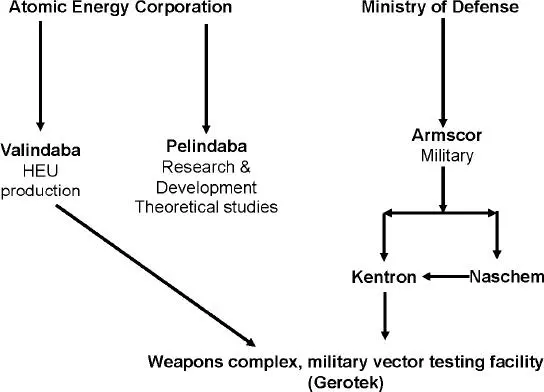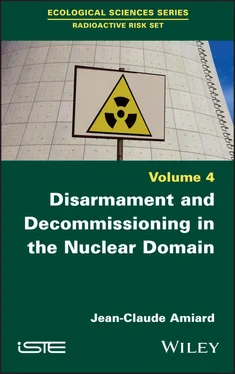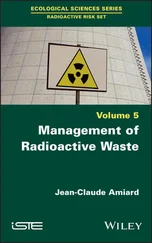The Nobel Prize in Physics has been awarded to more than 30 nuclear physicists and the Nobel Prize in Chemistry has been awarded to about nine nuclear chemists, as well as a Nobel Prize in Physiology, for their scientific work in the nuclear field [AMI 13].
The idea that the use of nuclear weapons could lead to catastrophic consequences remains a basis for their deterrent effect. The horror experienced by the victims of the Hiroshima and Nagasaki bombings was tangible proof of this. The Norwegian jury for the Nobel Peace Prize has also honored many personalities and organizations.
The first laureates to be rewarded were American chemist and physicist Linus Carl Pauling (in 1962), for his commitment against nuclear weapons testing; the Japanese Prime Minister Eisaku Sato (in 1974), for his renunciation of the nuclear option for Japan; the physicist Andrei Sakharov (in 1975), notably for his commitment to disarmament; the diplomats Alva Myrdal and Alfonso Garcia Robles (in 1982), for their “central role” in disarmament negotiations at the UN.
In 1985, the International Physicians for the Prevention of Nuclear War (IPPNW) was recognized for “services to humanity” in disseminating information about the catastrophic consequences of nuclear war, and in 1995, the NGO Pugwash and Jozef Rotblat were recognized for “their efforts in reducing the role of nuclear weapons in international politics and, in the long term, to eliminate them”. Still on the theme of abolition, the Nobel Committee provided a powerful sounding board for President Obama’s Prague speech in 2009, in which he shared his vision of a “world without nuclear weapons” [DEC 17].
In 2005, the Nobel Peace Prize was awarded to the International Atomic Energy Agency (IAEA) and to Mr. El Baradei, its director at the time, “for their efforts in preventing the use of nuclear energy for military purposes”.
Finally, in 2017, the anti-nuclear NGO ICAN, which used the theme of the consequences of a nuclear war, saw its action rewarded with the Nobel Peace Prize, a few months after the adoption of the Treaty on the Prohibition of Nuclear Weapons (NPT). However, the concrete benefits of this treaty for international peace and security are much less obvious than the risks it presents of blocking any progress in nuclear disarmament [DEC 17].
In addition, the “Don’t bank on the bomb” project reflects the NGOs’ search for other ways to delegitimize nuclear weapons. This initiative, implemented by the Netherlands-based NGO PAX, establishes a ranking of companies and investments in the field of nuclear weapons in an annual report, denouncing the financial institutions (“Hall of shame”) investing in the 27 companies identified as being involved in the production and maintenance of nuclear weapons [DEC 17].
1.7. The military denuclearization of a state
Several countries have voluntarily stopped their military nuclear programs. Of these, South Africa was the most advanced state in its program as tests had been conducted. However, its nuclear weapons were never really operational because they were too large to be delivered. However, the first bombs, including those from Hiroshima and Nagasaki, were designed for air delivery. They were not vectorizable, but they became so.
1.7.1. South Africa: the example of the complete denuclearization of a country
The denuclearization of South Africa is a unique case, since it is the only state that possesses atomic weapons that voluntarily renounces them. Moreover, during this denuclearization, South Africa split into two new states: South Africa and Namibia.
In 1979, South Africa’s nuclear weapons manufacturing facilities were transferred from the Pelindaba Nuclear Research Centre to the South African Weapons Corporation (Armscor), which developed the Kentron Circle facility. This facility was built in 1980 and is located 20 km west of Pretoria. It was later renamed Advena.
The organization of South Africa’s militarized nuclear program is described in Figure 1.4.
At Pelindaba, pistol-type mini nuclear weapons have been developed. Armscor installed a production line there in 1981 and produces at least one nuclear device each year with an output of 10 to 18 kilotons.
Advena’s central laboratories have built platforms for launching intercontinental ballistic missiles (ICBMs). Work to produce warheads with advanced designs has also been developed. On the same site, in collaboration with Israel, a missile with a range of 2,000 km was designed and tested. It was close to the ICBM Jericho II. The construction of Advena was completed at the same time as the end of South Africa’s nuclear program, before the 1994 election of Nelson Mandela [GLO 11].

Figure 1.4. Organizational structure of the South African nuclear program according to an IAEA member in August 1992 (source: [ALB 16])
The end of South Africa’s nuclear program should be seen in the context of major political developments in the region. First, in December 1988, South Africa, Angola and Cuba signed a tripartite agreement for the gradual withdrawal of Cuban troops from Angola. In April 1989, Namibia gained its independence. In September 1989, F. W. de Klerk was elected president. He immediately took steps to bring about fundamental political reforms aimed at ending apartheid and creating a democratic South Africa. Within a short time, the nuclear weapons program had become a liability. In November 1989, the government decided to stop the production of nuclear weapons. On February 26, 1990, de Klerk issued written instructions to end the nuclear weapons program and dismantle all existing weapons. The nuclear materials were to be melted down and returned to the Atomic Energy Corporation (AEC) in preparation for South Africa’s accession to the NPT.
The government also decided to not admit the existence of the nuclear weapons program before joining the NPT. As a result, the decommissioning project, like the nuclear weapons project, was classified as top secret. Dismantling began in July 1990. On September 6, 1991, all of the highly enriched uranium (HEU) had been removed from the weapons, melted down, and returned to the AEC for storage. Shortly after the last of the material was sent to the AEC, the Circle building was completely decontaminated, and the equipment that had been used to remelt and sink the HEU was sent to the AEC. The Advena/Circle facility was converted to a non-nuclear commercial operation. De Klerk’s revelation that South Africa had developed a nuclear arsenal was finally made in 1993 [ALB 94].
At the time of the dismantling of its military nuclear program, South Africa possessed six atomic weapons, with a seventh in the process of assembly. In 1991, South Africa’s enrichment plant Y had produced 993 kg of highly enriched uranium, including 677 kg of the isotope 235 [ALB 16]. The conversion rate of 68.2% was close to the threshold of 90% necessary to make a weapon. The South Africans were thus close to the goal.
The split of South Africa had various consequences on the demobilization of troops and their disarmament [DZI 17].
Namibia is a successful model of an international approach to disarmament and demobilization (DD). Namibia has been assisted by two UN structures, the United Nations Transitional Assistance Group (UNTAG) and the United Nations High Commissioner for Refugees (UNHCR), which have effectively carried out their military and repatriation tasks in Namibia’s successful transition to independence. This was facilitated by the fact that Namibia’s liberation movement comprised a single armed formation, the People’s Liberation Army of Namibia (PLAN). The official law enforcement force, SWATF (South West Africa Territorial Force) and the unofficial Koevoet (the counter-insurgency arm of the South West African Police Force) were eventually disarmed. The government decided to implement the aptly named Peace Project. This plan focused on the placement of ex-combatants in activities that were paid for, mainly in the civil service [DZI 17].
Читать дальше












